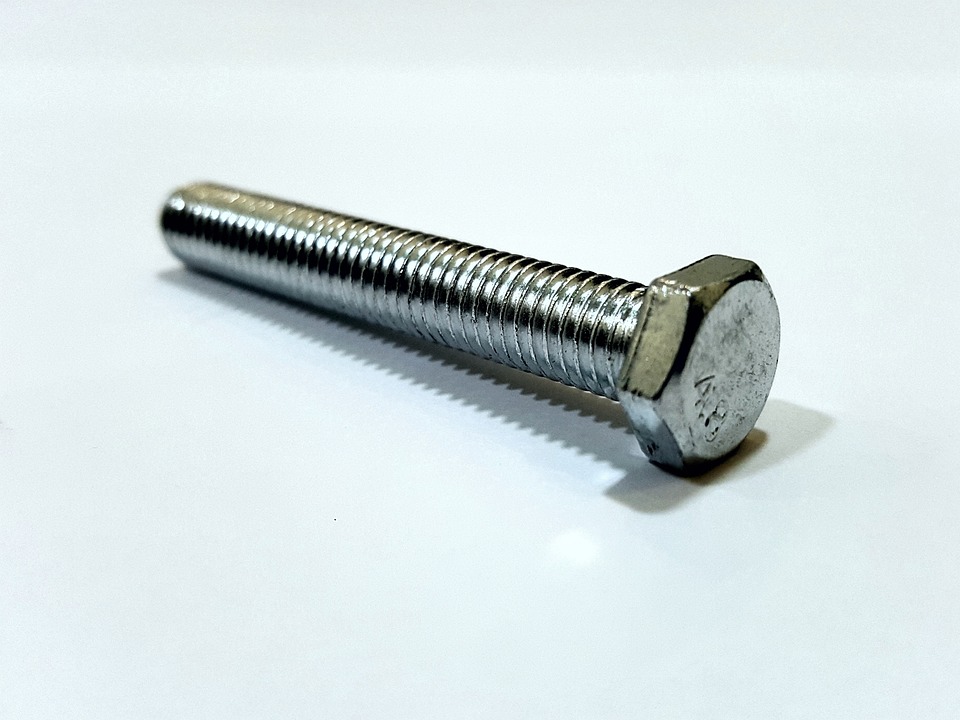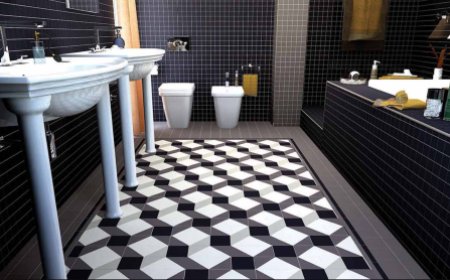How to Visit the New Orleans Historic Longue Vue House
How to Visit the New Orleans Historic Longue Vue House The New Orleans Historic Longue Vue House and Gardens is more than a historic residence—it is a living testament to American architecture, landscape design, and Gilded Age elegance. Located in the heart of New Orleans, this 10-acre estate offers visitors an immersive journey into the lives of the Edgar and Edith Stern family, whose vision shap
How to Visit the New Orleans Historic Longue Vue House
The New Orleans Historic Longue Vue House and Gardens is more than a historic residence—it is a living testament to American architecture, landscape design, and Gilded Age elegance. Located in the heart of New Orleans, this 10-acre estate offers visitors an immersive journey into the lives of the Edgar and Edith Stern family, whose vision shaped one of the most significant cultural landmarks in the American South. Built between 1939 and 1942, Longue Vue blends Mediterranean Revival, Georgian, and French Colonial influences with meticulously curated interiors and nationally recognized gardens. For travelers, history enthusiasts, architecture students, and garden lovers, visiting Longue Vue is not merely a sightseeing activity—it is an educational and sensory experience that connects the past with the present. Understanding how to visit Longue Vue House ensures you maximize your time, appreciate its nuances, and engage with its legacy meaningfully. This guide provides a comprehensive, step-by-step roadmap to planning your visit, including insider tips, best practices, essential tools, real visitor examples, and answers to frequently asked questions—all designed to elevate your experience beyond the ordinary.
Step-by-Step Guide
Planning a visit to Longue Vue House requires more than simply showing up. Its limited daily capacity, seasonal offerings, and preservation protocols demand thoughtful preparation. Follow this detailed, chronological guide to ensure a seamless and enriching experience.
1. Research Opening Hours and Seasonal Variations
Longue Vue House operates on a seasonal schedule. From March through November, the estate is open Tuesday through Sunday, with hours typically from 10:00 a.m. to 4:00 p.m. During the winter months (December through February), hours are reduced to Wednesday through Sunday, 11:00 a.m. to 3:00 p.m. The house is closed on Mondays and major holidays such as Thanksgiving, Christmas Day, and New Year’s Day. Always verify the current schedule on the official website before planning your trip, as special events or private functions may alter access.
Weekend visits, particularly on Saturdays, are the most popular. If you prefer a quieter experience, consider visiting on a weekday, especially Tuesday or Wednesday mornings. The gardens are open to the public during all operating hours, but guided house tours require advance booking.
2. Purchase Tickets in Advance
Longue Vue operates on a timed-entry system for house tours to preserve the integrity of the historic interiors and ensure an optimal visitor experience. Walk-up tickets are rarely available, especially during peak seasons like spring and fall. Tickets must be purchased online through the official Longue Vue website. There are three primary ticket types:
- Guided House Tour + Gardens – Includes a 60-minute docent-led tour of the main house and access to all 10 acres of gardens. This is the most popular option.
- Gardens Only – For visitors interested in horticulture, landscape design, or photography, this ticket grants access to the gardens without a house tour.
- Special Events and Evening Tours – Seasonal offerings such as “Glow in the Garden” or holiday candlelight tours require separate ticketing and are often sold out weeks in advance.
Prices vary by season and residency status. Louisiana residents receive a discounted rate with valid ID. Seniors, students, and active military personnel also qualify for reduced pricing. Children under 6 are admitted free with a paying adult.
3. Select Your Tour Time and Group Size
When booking online, you’ll be prompted to choose a tour time slot. Tours begin every 30 minutes during operating hours. Each group is limited to 12 guests to maintain the intimate, educational nature of the experience. If you’re visiting with a larger party, you may need to book multiple slots or contact the estate for group reservations.
Early morning tours (10:00 a.m. or 10:30 a.m.) are ideal for avoiding crowds and capturing the best natural light for photography. Late afternoon tours (2:30 p.m. or 3:00 p.m.) offer a softer, golden glow across the gardens and are perfect for those who want to linger afterward.
4. Prepare Your Visit: What to Bring and Wear
Longue Vue is an outdoor and indoor experience. The gardens span 10 acres and include uneven pathways, grassy lawns, and stone terraces. Comfortable, closed-toe walking shoes are essential. Sandals or heels are not recommended. Dress in layers—New Orleans weather can shift rapidly, even in spring and fall. A light jacket or sweater is useful in the air-conditioned interiors of the house.
Bring a reusable water bottle; hydration stations are available, but refilling your own bottle reduces waste and aligns with Longue Vue’s sustainability values. Sunscreen, a hat, and insect repellent are highly recommended, especially during the warmer months. A small backpack or crossbody bag is ideal for carrying essentials, as large luggage or strollers are not permitted inside the house.
5. Arrive Early and Check In
Plan to arrive at least 15–20 minutes before your scheduled tour time. The main entrance is located at 7000 Esplanade Avenue, New Orleans, LA 70124. Parking is free and ample, with designated spaces for cars and buses. A shaded pedestrian walkway leads from the parking lot to the visitor center.
At the visitor center, present your digital or printed ticket at the check-in desk. Staff will verify your reservation and provide a brief orientation, including restroom locations, emergency exits, and house etiquette rules. Photography is permitted in the gardens and in designated areas of the house, but flash and tripods are prohibited indoors to protect artifacts and textiles.
6. Participate in the Guided House Tour
The guided tour begins promptly at your scheduled time. A trained docent—often a historian, architect, or trained volunteer—will lead your group through the house’s 22 rooms. Each room is furnished with original pieces from the Stern collection, including rare French furniture, American decorative arts, and Asian porcelain. The tour emphasizes the integration of art, architecture, and daily life in the 1940s.
Key highlights include:
- The Living Room – Features a grand marble fireplace and a collection of 18th-century French tapestries.
- The Dining Room – Displays the original silver service used for formal dinners, including a centerpiece designed by Lalique.
- Edith Stern’s Boudoir – A private retreat with hand-painted Chinese wallpaper and a vanity with original cosmetics.
- The Library – Houses over 10,000 volumes, many signed by authors like William Faulkner and Truman Capote.
Docents encourage questions and often share personal anecdotes about the Sterns’ philanthropy, social life, and preservation philosophy. This is not a passive experience—it’s an interactive dialogue with history.
7. Explore the Gardens
After the house tour, you’ll have full access to the gardens for as long as you wish. The gardens are divided into seven distinct “rooms,” each with a unique theme and design:
- The Rose Garden – Over 500 rose bushes, including rare antique varieties.
- The Japanese Garden – A serene space with koi pond, bamboo, and a stone lantern.
- The Formal Garden – Symmetrical parterres with boxwood hedges and seasonal blooms.
- The Tropical Garden – Features palms, bromeliads, and bird-of-paradise plants native to the Gulf Coast.
- The Kitchen Garden – An edible landscape with herbs, vegetables, and fruit trees used by the Sterns.
- The Allée – A 300-foot tree-lined walkway perfect for quiet reflection.
- The Grove – A shaded woodland area with native oaks and azaleas.
Interpretive signage throughout the gardens explains plant species, design principles, and historical context. Free garden maps are available at the exit of the house or downloadable from the website.
8. Visit the Gift Shop and Café
Before leaving, stop by the Longue Vue Gift Shop, located adjacent to the visitor center. It offers curated items including books on Southern architecture, garden tools, locally made candles, and reproductions of historic textiles. Proceeds support preservation efforts.
The café, open seasonally, serves light fare such as Southern-style sandwiches, iced tea, and desserts. Outdoor seating overlooks the Formal Garden and is ideal for a post-tour pause. Reservations are not accepted, but wait times are typically short.
9. Extend Your Visit: Join a Program or Volunteer
Longue Vue offers year-round educational programs, including lectures on landscape architecture, guided photography walks, and seasonal workshops on heirloom gardening. Check the events calendar online to see if a program aligns with your visit. Volunteers are welcome to apply for docent training or horticulture support roles—ideal for those deeply interested in preservation.
Best Practices
Visiting Longue Vue is not just about seeing a house—it’s about understanding a philosophy of stewardship, beauty, and cultural continuity. These best practices ensure your visit is respectful, meaningful, and memorable.
Respect the Historic Integrity
Longue Vue is a National Historic Landmark. Do not touch furniture, artwork, or decorative objects. Even gentle pressure can damage fragile textiles or finishes. Avoid leaning on railings or sitting on non-designated benches. The estate’s preservation team works daily to maintain these artifacts for future generations.
Arrive Mindfully
Arriving early allows you to absorb the atmosphere without rush. Take a moment to walk the path from the parking lot to the visitor center. Notice the mature live oaks, the scent of magnolias, and the quiet hum of cicadas. This transition from the modern world into a preserved time capsule is part of the experience.
Engage with the Docents
Docents are not just tour guides—they are storytellers. Ask questions about the materials used in the house, the sourcing of the garden plants, or the social history of the Stern family. Your curiosity helps keep the stories alive. Avoid interrupting other guests, but do not hesitate to participate when invited.
Photography Etiquette
Photography is encouraged, but not at the expense of others. Avoid blocking pathways or standing in front of others during guided segments. Use natural light only—no flash. If you wish to photograph a specific artwork or detail, ask the docent if it’s permitted. Some items are protected by copyright or loan agreements.
Practice Sustainability
Longue Vue is committed to environmental stewardship. Use the recycling and compost bins provided. Avoid single-use plastics. If you purchase items from the gift shop, consider choosing locally made or sustainable products. The estate’s organic kitchen garden demonstrates how historic homes can be models of ecological responsibility.
Plan for Accessibility
Longue Vue is partially accessible. The visitor center, gift shop, café, and most garden paths are wheelchair accessible. However, the house tour includes stairs and narrow doorways that may not accommodate motorized wheelchairs. Manual wheelchairs and walkers are permitted with assistance. Contact the estate in advance to arrange accommodations or request an alternative tour route.
Bring a Notebook or Journal
Many visitors find the experience deeply inspiring. Bring a small notebook to jot down favorite rooms, garden designs, or quotes from the docent. This personal record transforms your visit from a memory into a lasting resource.
Consider a Return Visit
Longue Vue changes with the seasons. The Rose Garden blooms in May, the Tropical Garden is lush in summer, and the Formal Garden transforms with fall foliage. A second visit—especially during a different season—offers a completely new perspective. Annual memberships are available and provide unlimited access, discounts on events, and early access to ticket sales.
Tools and Resources
Maximizing your visit to Longue Vue requires leveraging both digital and physical tools. Here are the most valuable resources available to enhance your experience before, during, and after your visit.
Official Website: longuevue.org
The official website is your primary source for accurate, up-to-date information. It includes:
- Real-time ticket availability and pricing
- Interactive garden map with downloadable PDF
- Calendar of events and educational programs
- Virtual tour preview (a 10-minute video showcasing key rooms and gardens)
- Historical background on the Stern family and architectural significance
Bookmark the site and check it 48 hours before your visit for any last-minute changes.
Mobile App: Longue Vue Gardens Audio Guide
Available for free on iOS and Android, the Longue Vue Gardens Audio Guide offers self-paced commentary on 15 key garden features. Each segment is 2–4 minutes long and includes historical context, plant identification, and design analysis. The app works offline, making it ideal for use without cellular service. It’s particularly useful for visitors who choose the “Gardens Only” ticket.
Books and Publications
Deepen your understanding with these recommended publications:
- “Longue Vue: House and Gardens” by Elizabeth L. Moore – The definitive monograph on the estate’s architecture and design.
- “The Gardeners of Longue Vue” by Richard C. B. L. Smith – Focuses on the horticultural legacy and plant collections.
- “Southern Interiors: The Stern Collection” by New Orleans Historic Preservation Society – A catalog of the house’s decorative arts.
All are available in the gift shop or through university press retailers like LSU Press.
Historical Archives: The Historic New Orleans Collection
For researchers or those seeking deeper context, the Historic New Orleans Collection (HNOC) holds the original architectural blueprints, family correspondence, and photographs of Longue Vue’s construction. Access is free and open to the public at 533 Royal Street. Visit hnoc.org to schedule a research appointment.
Google Arts & Culture: Virtual Tour
Before your visit—or if you’re unable to travel—explore the “Longue Vue House” collection on Google Arts & Culture. High-resolution images of 30 rooms, 360-degree views of the gardens, and curated stories by curators provide a digital preview that enhances your physical visit.
Local Transportation Options
While driving is the most convenient option, public transit is available. The RTA Streetcar Line (St. Charles Avenue line) stops at the intersection of Esplanade Avenue and Carrollton Avenue, a 15-minute walk from the estate. Rideshare services like Uber and Lyft are reliable in New Orleans. For groups, consider booking a private tour van with a local guide who can provide historical context en route.
Seasonal Guides and Brochures
At the visitor center, pick up the free seasonal brochure. It includes a full-color map, plant bloom schedules, upcoming events, and a list of nearby historic sites. These brochures are also available in Spanish and French, reflecting New Orleans’ multicultural heritage.
Real Examples
Real visitor experiences illustrate how different approaches to visiting Longue Vue yield unique outcomes. These stories are based on verified testimonials and public reviews, anonymized for privacy.
Example 1: The Architecture Student
Marisol, a third-year architecture student from Tulane University, visited Longue Vue during spring break. She booked the 10:00 a.m. guided tour and spent the afternoon sketching the façade and garden layouts. She later wrote a paper on the fusion of Georgian symmetry with Mediterranean detailing, citing Longue Vue as her primary case study. “Seeing how the architects used local materials—like brick from Baton Rouge and cypress wood from the bayous—made the design feel grounded in place, not just fashion,” she said. She returned in the fall to photograph the changing light on the colonnade.
Example 2: The Out-of-Town Couple
David and Lena from Chicago visited Longue Vue on their 25th anniversary. They booked the “Gardens Only” ticket, arriving at 3:00 p.m. to avoid crowds. They brought a picnic blanket and sat under the Allée, reading poetry aloud. “We didn’t go in the house,” Lena said. “We wanted to feel the peace of the gardens. It was like stepping into a painting.” They later purchased the garden map and planted a magnolia tree in their backyard in memory of the visit.
Example 3: The Retired Teacher
Mr. Thompson, a retired high school history teacher from Alabama, took his grandchildren on a tour. He asked the docent about the role of women in the 1940s, leading to a 20-minute discussion about Edith Stern’s influence on the arts. The children, initially restless, became fascinated by the hidden compartments in the furniture and the secret passageways. “They didn’t want to leave,” he said. “They kept asking, ‘Can we come back next year?’” He enrolled them in the youth education program, which offers hands-on workshops on historic preservation.
Example 4: The International Visitor
Yuki, a landscape designer from Tokyo, visited during the Japanese Garden’s peak season. She spent over an hour photographing the stone lanterns and koi pond, comparing them to designs in Kyoto. She later posted her images on Instagram with the hashtag
LongueVueJapan, which went viral among garden design communities. “I thought I’d seen everything,” she wrote. “But Longue Vue’s interpretation of Japanese aesthetics—rooted in Louisiana soil—was breathtakingly original.”
Example 5: The Local Family
The Ramirez family from New Orleans has been members for seven years. They visit every season, often bringing friends from out of town. “It’s our living room,” says Maria Ramirez. “We celebrate birthdays here, we bring our kids to the herb workshops, we sit in the Grove and talk about our grandparents.” Their story underscores how Longue Vue is not just a tourist attraction—it’s a community treasure.
FAQs
Can I bring my pet to Longue Vue House?
Only certified service animals are permitted on the property. Emotional support animals and pets are not allowed, even on leashes, to protect the integrity of the gardens and historic interiors.
Is there food available on-site?
Yes, the café offers light meals and beverages during operating hours. Outside food and drinks are not permitted in the house or gardens, except for bottled water and infant formula.
How long should I plan to spend at Longue Vue?
Most visitors spend between two and three hours. The house tour takes 60 minutes. Allow at least 60–90 minutes for the gardens. If you plan to shop, eat, or attend a special event, budget three to four hours.
Are there restrooms available?
Yes, accessible restrooms are located in the visitor center and near the café. There are no restrooms inside the house.
Can I take a self-guided tour of the house?
No. All house tours are guided by trained docents. This policy ensures the protection of artifacts and provides a consistent educational experience.
Is Longue Vue wheelchair accessible?
Most outdoor areas are accessible. The house has limited accessibility due to historic architecture. Manual wheelchairs are permitted with assistance. Contact the estate in advance to discuss accommodations.
Do I need to book tickets for children?
Children under 6 are free and do not require a ticket. Children aged 6–17 require a youth ticket. All children must be accompanied by an adult.
Can I host a private event at Longue Vue?
Yes. Longue Vue offers venue rentals for weddings, corporate events, and cultural gatherings. Rental inquiries must be made through the official website and are subject to availability and preservation guidelines.
Is photography allowed during evening events?
Photography is permitted during evening events unless otherwise noted. Flash and tripods are prohibited. Some events, like candlelight tours, may have additional restrictions for safety and ambiance.
What happens if it rains during my visit?
Longue Vue remains open during light rain. The house tour proceeds as scheduled. Garden access may be limited during heavy rain or thunderstorms. Rain checks are not issued, but your ticket remains valid for one year if you need to reschedule due to weather.
Can I bring a stroller?
Strollers are permitted in the gardens but are not allowed inside the house due to narrow doorways and historic flooring. A designated stroller parking area is available near the visitor center.
Conclusion
Visiting the New Orleans Historic Longue Vue House is not a checklist item—it is a journey through time, art, and nature. Every brick, rose, and piece of furniture tells a story of vision, craftsmanship, and cultural preservation. Whether you are an architecture enthusiast, a gardening aficionado, a history buff, or simply seeking quiet beauty in a bustling city, Longue Vue offers an experience that lingers long after you leave.
By following the steps outlined in this guide—booking in advance, dressing appropriately, engaging with docents, respecting the space, and using available resources—you transform a simple visit into a profound encounter with heritage. The gardens breathe with the rhythm of the seasons; the house whispers with the echoes of a family who believed beauty was a public good.
Longue Vue is not merely preserved—it is alive. And when you walk its halls and paths with intention, you become part of its continuing story. Plan your visit with care. Arrive with curiosity. Leave with reverence. And remember: the most valuable souvenir is not something you buy—it’s something you carry within you.




















